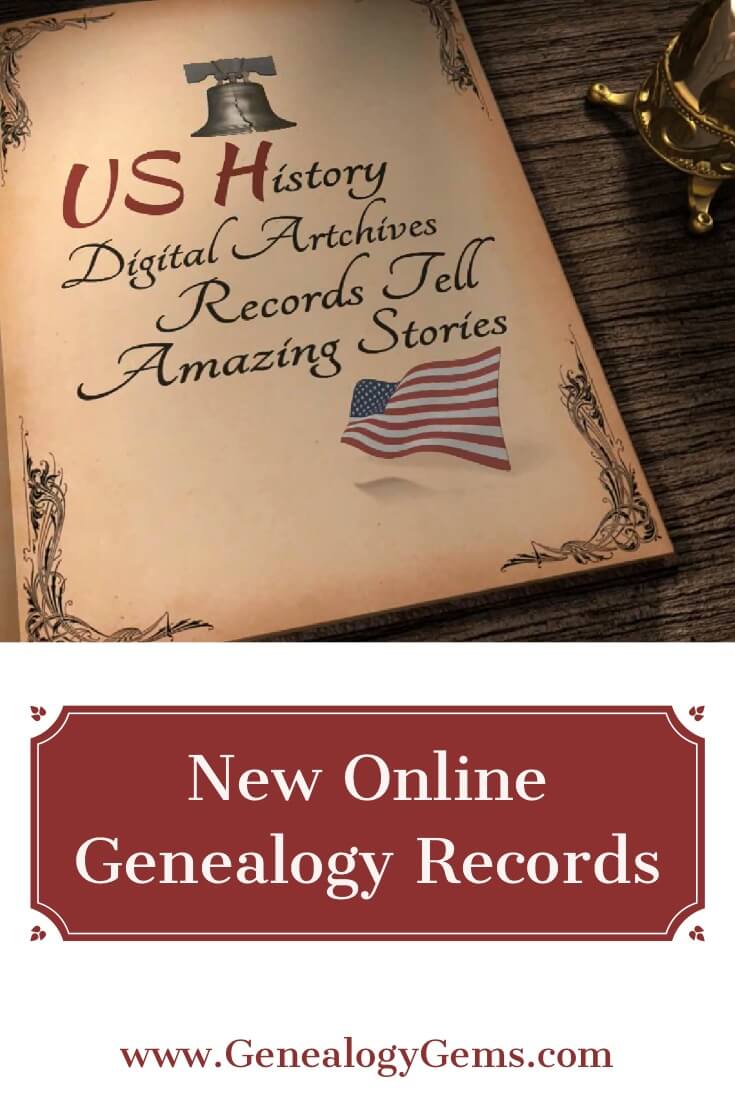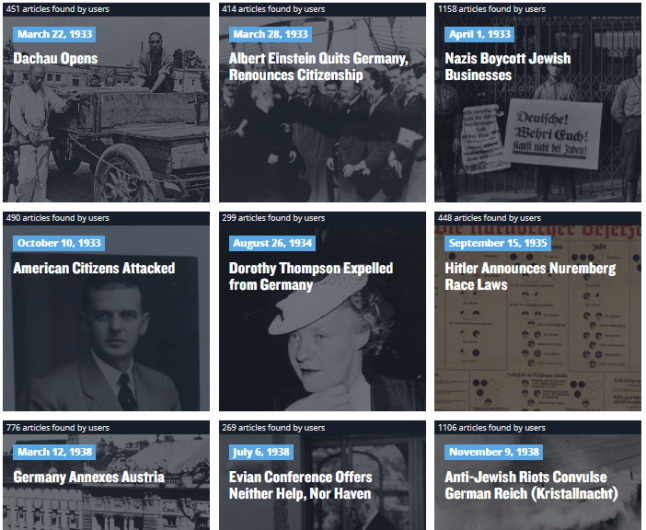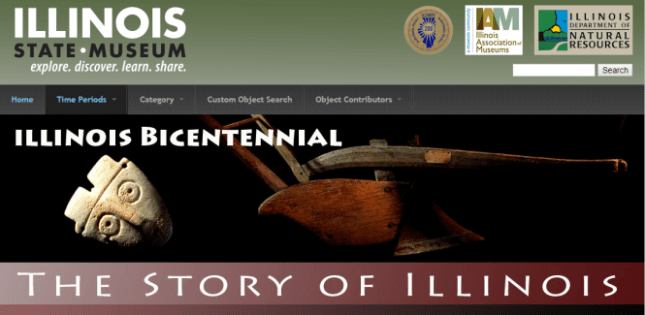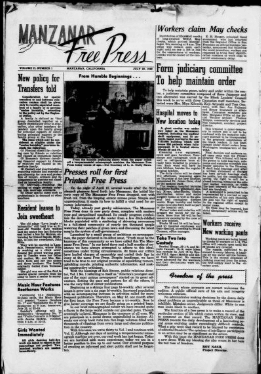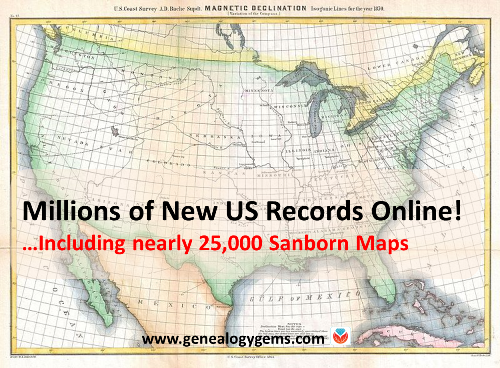by Sunny | May 18, 2018 | 01 What's New, African-American, Cemeteries, Digital Archives, Jewish, Records & databases, United States
Record collections and digital archives of US history reveal fascinating stories from our collective past. Here we report on resources relating to the US Colored Troops in the Civil War, old Southern architecture, higher education in Virginia, Southern burial grounds, the south side of Chicago, the history of Illinois, and WWII Japanese internment camps. What might any of these reveal about your family history?
Coming soon: U.S. Colored Troops Database
Usually, we wait to report about new online record projects until they are actually online. But we can’t wait to share this good news about records of the U.S. Colored Troops (African American soldiers who served in the Civil War). According to an NYU news release, researchers are “transcribing the contents of thousands of personnel and pension records from the Civil War, which also include marriages, children, and residencies, among other data, that are gradually forming the African American Civil War Soldiers database.” That database will eventually be housed at the African American Civil War Museum website.
US history digital archives you should know about
Southern architecture: Surveying the South
The Library of Congress has created a new series called Story Maps, which “combine text, images, multimedia, and interactive maps [from their collections] to create engaging online narrative experiences,” according to a recent announcement.
One of the first Story Maps to be created is Surveying the South, based on about 7000 photographs taken in the 1930s of “exteriors and interiors of houses, mills, and churches as well as mansions, plantations, and outbuildings” in Virginia, Maryland, North Carolina, South Carolina, Georgia, Alabama and Louisiana, Florida, Mississippi, and West Virginia. According to the site, “Domestic dwellings are the most frequently represented structures, ranging from farmhouses and slave quarters to elegant mansions and houses, including abandoned buildings and ruins.” But there are also “city halls, courthouses, schools, churches, and cemeteries…law offices, mills, stores, and taverns.” If locations associated with your family history are part of this Story Map, it could be an incredible resource for you.
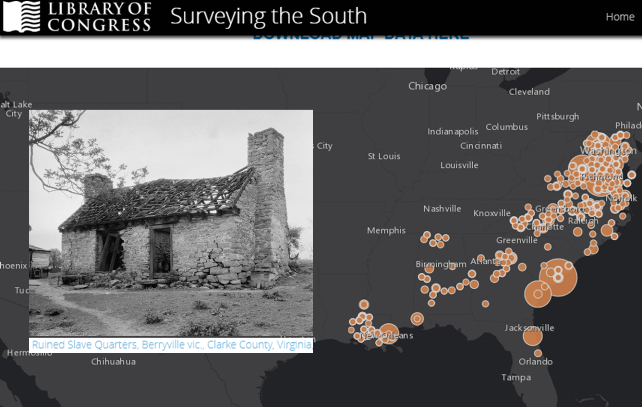
Virginia yearbooks
The Archives at the Library of Virginia announced recently, “We have been able to digitize and provide access to 2,308 yearbooks [from around the state] published though 1977, the year that copyright law impacts use. So far, 35 local libraries have contributed their yearbooks, with more in process. There is no set end date for this project; it will continue as long as…funding supports it and there are willing participants.” Click here to explore The Library of Virginia’s digitized yearbook collection (sorted by the public libraries that have contributed their copies).
Southern burial grounds
This isn’t a new collection, but it’s been moved, so it’s a nice opportunity to make you aware of it. The Tennessee State Library and Archives announced the following on its Facebook page: “The Richard C. Finch Folk Graves Digital Photograph Collection is now on [The Tennessee Virtual Archive] TeVA (formerly on the Library and Archives’ Flickr). Dr. Finch has visited hundreds of cemeteries in Tennessee, Alabama, Kentucky, Arkansas, North Carolina, Louisiana and Texas photographing covered graves. His main focus has been on comb graves, so called because architecturally, the slabs of stone make a roof or comb over a grave. Click here to learn more about comb graves and the project.
Holocaust News in US Newspapers
We have reported in the past on History Unfolded, a project by the United States Holocaust Museum that collects local U.S. newspaper coverage in the 1930s and 1940s of Holocaust-related events in an effort to better understand what American readers knew about Nazi Germany. The Dallas News reports, “With the help of hundreds of students and dedicated volunteers, the museum built an extensive online archive of American newspaper coverage of key Holocaust events, including more than 12,000 articles from every U.S. state.” Click here to search the growing archive of newspaper stories or to help find more stories in local newspapers.
Home Movies and Oral Histories: Chicago’s South Side
The rich and famous aren’t the only ones who created home movies in the past. The University of Chicago has launched a new online digital archive chronicling everyday life on the South Side of Chicago in the 20th century. “The new South Side Home Movie Project Digital Archive is a globally accessible online portal to home movies shot by residents of Chicago’s South Side neighborhoods from 1929-1982,” says a university announcement.
The archive “showcases home movies organized into easily navigable categories: by the family that contributed their films; by subject matter, ranging across topics like fashion and birthdays to graduations, road trips, and the Bud Billiken Parade; year of production [and] filming location, including local landmarks like Buckingham Fountain….Oral histories recorded by family members describing their home movies are also available as companion works to the films. The archive continues to accept old home movies and encourages viewers to “to add tags and comments to help with identifying places, people, and events in the footage as participants in a collective historical project.” Click here to explore this digital archive.
Story of Illinois
The state of Illinois is celebrating its bicentennial soon, and has launched a new website to celebration. Story of Illinois is hosted by the Illinois State Museum and “features objects from the museum’s Illinois Legacy Collection as well as collections from other museums across the state that celebrate Illinois heritage,” reports the WAND 17 news website. Visitors to the free digital archive can explore the virtual exhibit by several time periods, from colonial to territorial times to early statehood, the Civil War, the industrializing age and history since 1917.
WWII Japanese internment camps
Another Story Map created by the Library of Congress is “Behind Barbed Wire,” an interactive exhibit offering “a unique glimpse into the daily lives of Japanese-Americans in internment camps during WWII through the digitized collection of internment camp newspapers at the Library of Congress.” Here, you’ll follow the story of about 120,000 U.S. residents of Japanese descent who were forcibly removed from their homes and located first in temporary assembly centers and then in permanent internment camps.
At the heart of this collection are more than 4,600 English- and Japanese-language newspaper issues published in 13 camps by the residents themselves. According to the site, “Camp newspapers kept residents informed, relaying administrative announcements, orders, events, vital statistics, news from other camps, and other tidbits concerning daily camp life. They published not only straight news, but also editorials, opinions, human-interest stories, and entertainment pieces such as sports news, literary works, and comic strips. They recorded the daily activities of residents for whom, even in detention, life still continued on.”
by Lisa Cooke | Apr 3, 2017 | 01 What's New, Oral History
Have you used WPA records for genealogy? Their Historical Record Surveys and local and oral histories may help you in your family history research. Existing records and locations vary widely. Here are tips to help you in your search.
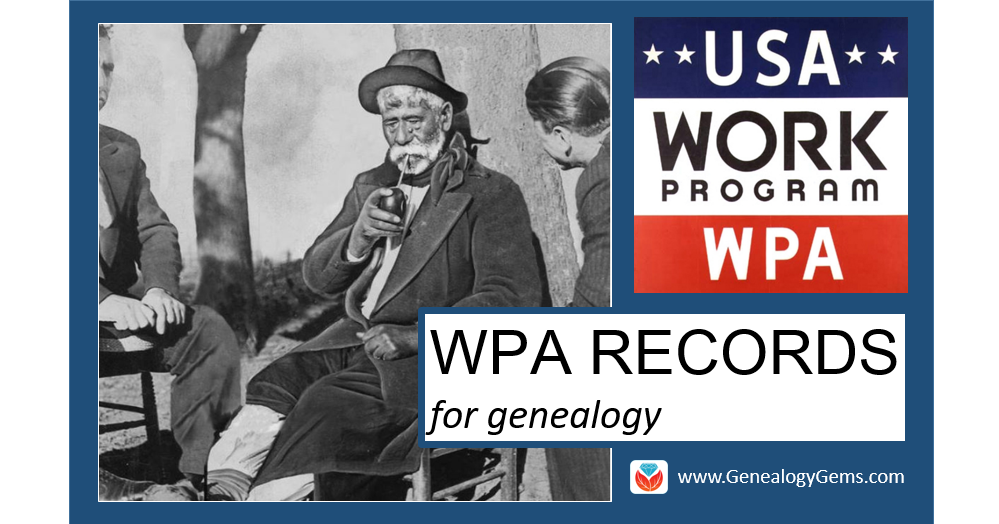
In the late 1930s and early 1940s, employees of the Works Progress Administration (WPA, also known as the Works Projects Administration) created new resources for U.S. genealogical research. It’s possible you’ve even consulted some of these without being aware of their WPA origins. After all, the projects and their formats varied. They didn’t always prominently credit the WPA and some were printed long afterward. We’re going to shine the spotlight on WPA-era local histories, oral histories and statewide Historical Record Surveys.
WPA Records for Genealogy: Local Histories
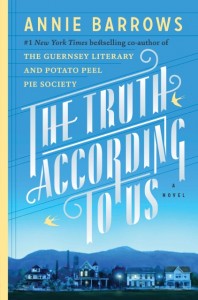 In Annie Barrows’ novel The Truth According to Us, Layla Beck heads to the small fictional town of Macedonia, West Virginia to write a local history as a WPA assignment. Drama ensues, both in Layla’s personal life and as she tries to learn local stories, which everyone reports a little differently. (We featured this book in the Genealogy Gems Book Club.)
In Annie Barrows’ novel The Truth According to Us, Layla Beck heads to the small fictional town of Macedonia, West Virginia to write a local history as a WPA assignment. Drama ensues, both in Layla’s personal life and as she tries to learn local stories, which everyone reports a little differently. (We featured this book in the Genealogy Gems Book Club.)
Actually, local histories were written as WPA projects. Their scope, topics, and formats varied, depending on the unique background and resources of each region and how active WPA workers were in each state and county. For example, WPA historical materials in Morrison County, Minnesota include “histories on townships, cities, churches, schools, businesses, the military, and miscellaneous county history topics,” which have since been collected and reprinted by the county historical society. Many historical projects included photographs, such as this one for the city of New Orleans.
WPA Records for Genealogy: Oral Histories
WPA workers also captured oral histories of individuals, too. Many were collected in American Life Histories: Manuscripts from the Federal Writers’ Project, 1936 to 1940, now online at the Library of Congress. According to the collection description, “The documents chronicle vivid life stories of Americans who lived at the turn of the century and include tales of meeting Billy the Kid, surviving the 1871 Chicago fire, pioneer journeys out West, factory work, and the immigrant experience. The documents often describe the informant’s physical appearance, family, education, income, occupation, political views, religion and mores.”
Other important WPA oral histories are narratives of former slaves and their families. You can browse an enormous collection of these online at the Library of Congress. These aren’t the ideal eyewitness accounts we wish for, as they were gathered so long after the end of slavery, from many who were young children at the time. Also, many researchers believe interviewees may not have spoken candidly, especially to white interviewers who may have known them personally.
It’s a long shot to find an ancestor mentioned by name in WPA oral histories. In some instances, pseudonyms were even used for names and places. But, you can still learn a lot from others’ descriptions of daily life and unusual events your ancestors may have experienced.
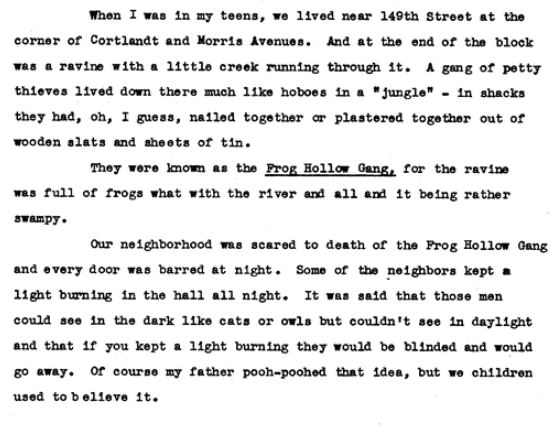
From one of the slave narratives mentioned in this article.
Historical Record Surveys
The Historical Record Surveys created by the WPA are among the most genealogically-valuable of their projects. “Under the auspices of the WPA, workers went to archives, historical societies, public and university libraries, and compiled inventories of manuscript collections,” writes Bryan Mulcahy in an online report. “They went to courthouses, town halls, offices in large cities, and vital statistics offices and inventoried records. Besides compiling indexes, they also transcribed some of the records they found.”
Today, many of their efforts still exist. They include indexes to cemeteries, newspapers, and naturalization records, as well as inventories of courthouse records, church records, and other manuscript collections in various archives or libraries. Of course, some records may have been moved or destroyed since inventories were created, but knowing what records existed around 1940 and what they were called may help you locate surviving collections. Some indexes, such as those of cemetery tombstone inscriptions, may actually be more valuable since they captured information from tombstones that may no longer exist or be legible.
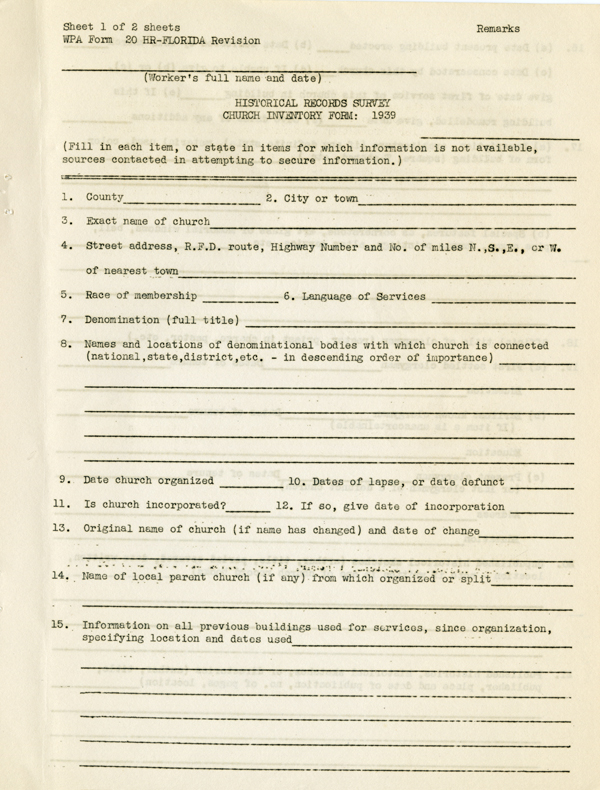
A blank WPA Historical Records Survey church records inventory form. Image courtesy of the State Archives of Florida. Click this image to find it online at Florida Memory.
One great example is the Historical Records Survey for the state of Oregon, described as “the most comprehensive documentary project of Oregon history and related records of its time.” It includes historical essays, document transcriptions, interviews, research notes, photographs, pamphlets and more. According to its collection description, “The territorial and pioneer periods of the mid-to-late nineteenth century receive the greatest attention, with an emphasis on the growth of state government and infrastructure, business and agriculture, transportation, education, biography, and relations between social groups. Native Americans figure prominently in this collection.”
Finding WPA Records for Genealogy Online
Some WPA projects were carried out on a federal level and others by state agencies. They were never centrally published or collected. Today, surviving original files and published volumes are scattered across the country. Some can be found in the National Archives, many in state libraries or societies, and many more available at local repositories.
A Google search such as historical records surveys and the name of the state and/or county is a great way to start your search for WPA records for genealogy research. Some results will lead right to the kinds of resources you want, such as this guide to WPA records in archives in the Pacific Northwest. Others, such as this one for the Iowa Historical Records Survey published in The American Archivist, are mostly a history of the effort. However, they do contain several useful bibliographic citations to records that were created. Add the name of the county to your search and you may find more targeted results, such as this library catalog entry for the inventory of the Jasper County archives. Click here to learn more about Google searches for genealogy records you want to find.
Remember, though, that many WPA publications and collections aren’t identified as such. Don’t fixate on needing to find WPA listed in the title. Just concentrate your efforts on finding the local and oral histories, photos, historical record indexes and inventories, and other resources that may be out there. When you find one created during the Great Depression, you’ll know it may have been done by the WPA.
 Love what you’re reading and want to learn more? Go deeper into genealogy “gems” like these in Lisa Louise Cooke’s Genealogy Gems Podcasts. Lisa produces a free internationally-renowned monthly podcast that’s had over 2.5 million downloads! Additionally, Genealogy Gems Premium website members also have access to her full archive of monthly Premium podcast epidodes: check out a full description of these here including Episode 2 on WPA records for genealogy.
Love what you’re reading and want to learn more? Go deeper into genealogy “gems” like these in Lisa Louise Cooke’s Genealogy Gems Podcasts. Lisa produces a free internationally-renowned monthly podcast that’s had over 2.5 million downloads! Additionally, Genealogy Gems Premium website members also have access to her full archive of monthly Premium podcast epidodes: check out a full description of these here including Episode 2 on WPA records for genealogy.
by | Apr 3, 2016 | 01 What's New, Apps, MyHeritage, Oral History, Trees
The free MyHeritage app makes it easy to record oral history interviews with loved ones on your mobile device. Share these on your MyHeritage tree and even keep a copy of the audio file for yourself.

Oral history interviews are instant heirlooms. They capture not only a person’s memories, but the sound and nuances of their voice. You preserve the unique essence of the way they speak, like an accent, the way they turn a phrase or pronounce certain words.
The MyHeritage mobile app now offers the ability to record and share oral history interviews right from your mobile device. This is something Ancestry.com doesn’t offer (no uploading of video or audio at ALL, let alone a function that lets you record), which is why this caught my eye.
I did some homework so I can show you how to record and share oral histories with MyHeritage–and how to save the master file to your own computer, as Lisa so often recommends. (Click here to read why). Here’s the step-by-step:

MyHeritage.com image.
1. From within the app, go to your family tree.
2. Open the individual profile for the person about whom you’re doing an interview.
3. You’ll see an audio icon (looks like a set of headphones–see image to the right). Tap it to create a new recording or to access previous recordings about that person.
4. The recording will automatically sync to your online tree, where other members of your family website can access and enjoy it. If you use Family Tree Builder, MyHeritage.com’s desktop software, it will sync to there along with other updates.
5. Save the audio file to your own computer. Log in to your MyHeritage family website. Go to that person’s individual profile. Look under the photo stream for that person for the audio file, which looks like this:
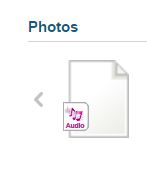
Click on the audio file icon. You’ll see this screen:
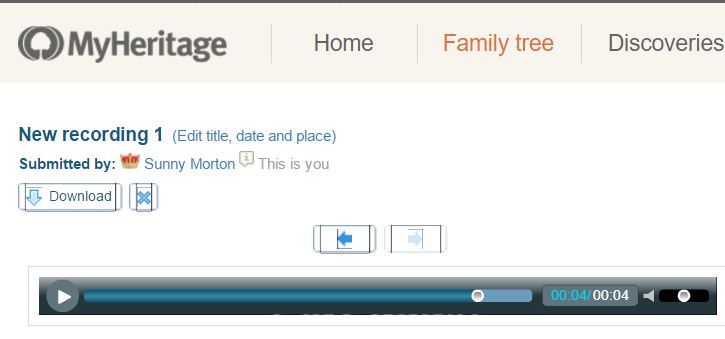
Click Download. The file will be downloaded to your computer as an .m4a filetype.
Remember, you can also upload any audio or video files created in the past to your MyHeritage family website, as well. MyHeritage say: “Scroll over the Photos tab and select ‘Add photos & videos.’ A black overlay will appear over the current page. You can drag & drop photos, videos, documents and audio files into the black overlay where it says ‘Drag photos & videos here.’ Alternatively, you can click the blue button ‘Select files’ and choose files from your computer.” Click here to learn more about using audio files on MyHeritage.
 You will find more mobile genealogy gems like this one in Lisa Louise Cooke’s new book, Mobile Genealogy: How to Use Your Tablet and Smartphone for Family History Research. There’s an entire chapter on how to use free audio apps! Other chapters on apps for note-taking, file storage, photo, collaboration, travel, genealogy and sharing your family history will also help you make your mobile device a powerful genealogy tool.
You will find more mobile genealogy gems like this one in Lisa Louise Cooke’s new book, Mobile Genealogy: How to Use Your Tablet and Smartphone for Family History Research. There’s an entire chapter on how to use free audio apps! Other chapters on apps for note-taking, file storage, photo, collaboration, travel, genealogy and sharing your family history will also help you make your mobile device a powerful genealogy tool.


